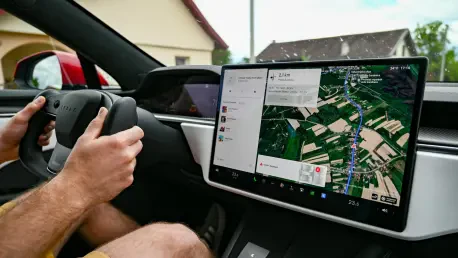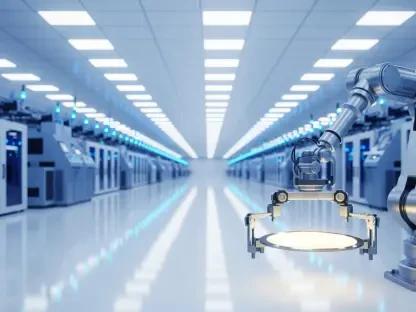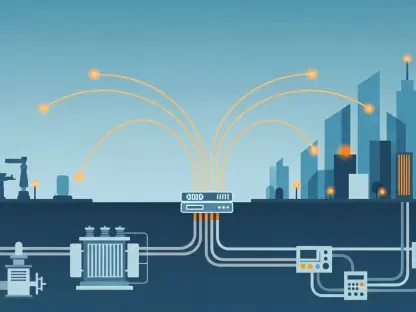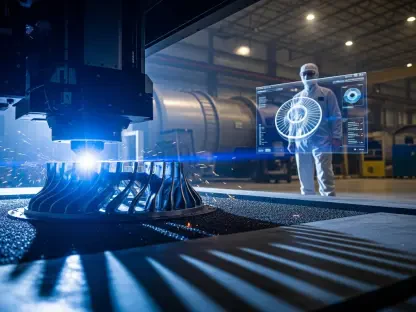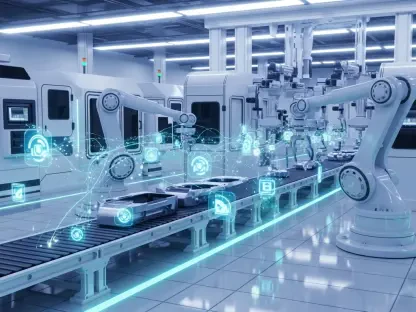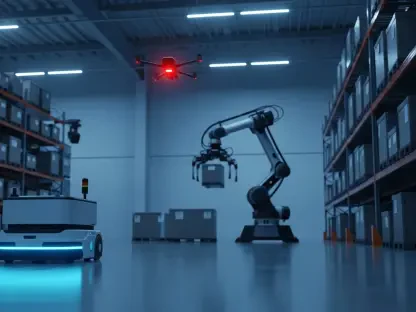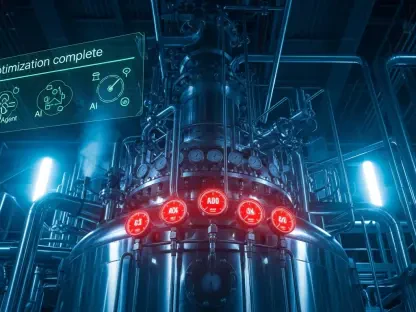In a striking development that has captured the attention of both the automotive industry and the general public, the National Highway Traffic Safety Administration (NHTSA) has launched a comprehensive investigation into Tesla’s Full Self-Driving (FSD) technology, encompassing nearly 2.9 million vehicles on the road today. This probe stems from alarming reports of over 50 traffic safety violations linked to the system, ranging from running red lights to driving against traffic flow. Such incidents have sparked intense scrutiny over whether FSD, marketed as a cornerstone of autonomous driving, truly delivers on its promise of safety and reliability. With public trust at stake and the potential for far-reaching regulatory changes, this investigation could redefine the trajectory of self-driving technology. As Tesla continues to push boundaries, the tension between innovation and accountability has never been more evident, setting the stage for a critical examination of how autonomous systems are developed and deployed in real-world conditions.
Safety Issues with Tesla’s Full Self-Driving System
Specific Incidents and Risks
The core of NHTSA’s investigation into Tesla’s FSD technology revolves around a troubling pattern of traffic violations that pose significant risks to road safety. Over 50 documented incidents have come to light, including vehicles running red lights, making illegal turns, and even navigating the wrong way on roads. These violations are not mere technical glitches but represent serious lapses in the system’s ability to adhere to fundamental traffic rules. Beyond these infractions, 14 crashes directly tied to FSD have resulted in 23 injuries, painting a stark picture of the potential human cost. Urban environments and adverse weather conditions appear to exacerbate these issues, highlighting limitations in how the system interprets complex scenarios. The frequency and severity of these events have fueled concerns that FSD may not be ready for widespread use, prompting regulators to dig deeper into whether the technology’s deployment outpaces its readiness for public roads.
Delving further into the risks, the specific nature of FSD’s failures reveals systemic challenges that Tesla must address. Improper lane changes and failure to recognize critical hazards, such as stopped emergency vehicles, are among the recurring problems cited in incident reports. These errors suggest that the system’s environmental perception and decision-making algorithms may struggle under certain conditions, despite Tesla’s claims of continuous improvement. The fact that these issues persist even after software updates, such as the recent version 12.5, raises questions about the depth of the fixes applied. For drivers relying on FSD, these lapses can transform a promising feature into a dangerous liability, especially when split-second decisions are required. As NHTSA compiles data from crash reports and user accounts, the investigation seeks to pinpoint whether these risks stem from design flaws or inadequate testing, a determination that could have profound implications for Tesla’s future.
Historical Regulatory Scrutiny
Tesla’s journey with autonomous technology has long been under the regulatory microscope, with NHTSA probes dating back nearly a decade. Since initial investigations began, the agency has linked both FSD and its predecessor, Autopilot, to multiple crashes and fatalities, often pointing to sensor limitations and overreliance on driver attentiveness as contributing factors. Past findings have led to software updates, yet core issues seem to linger, suggesting that incremental fixes may not fully address underlying deficiencies. The current probe builds on this history, intensifying focus on whether Tesla has learned from prior regulatory feedback or if persistent gaps remain in system design. This pattern of scrutiny underscores a broader challenge: ensuring that cutting-edge technology evolves in tandem with safety expectations, a balance Tesla has struggled to strike consistently over the years.
Another layer of concern in this historical context is Tesla’s track record with crash reporting and transparency. NHTSA has separately investigated delays in the company’s notification of incidents involving FSD and Autopilot, raising questions about accountability. These delays can hinder timely regulatory responses and obscure the full scope of safety risks, potentially putting more drivers at risk. The agency’s current efforts aim to assess not only the technology itself but also Tesla’s compliance with reporting obligations, a critical aspect of fostering trust between automakers and regulators. As evidence mounts, including crash data and user testimonials, the investigation could reveal whether Tesla’s approach to addressing past criticisms has been sufficient or if more stringent oversight is necessary to prevent future harm. This historical lens provides crucial context for understanding the stakes of the ongoing probe and its potential to reshape Tesla’s operational practices.
Public and Industry Reactions
Growing Public Skepticism
Public sentiment toward Tesla’s FSD technology has taken a sharp turn toward skepticism, fueled by a growing body of evidence shared across social media platforms like X. Videos and firsthand accounts depict the system committing glaring errors, such as ignoring stopped school buses or misnavigating one-way streets, painting a picture of a technology that often falls short of its autonomous promise. These widely circulated anecdotes have amplified calls for tighter oversight, as everyday drivers express unease about sharing the road with vehicles reliant on FSD. The visceral nature of these shared experiences—often capturing near-misses or outright violations—has transformed abstract safety concerns into tangible fears, putting pressure on regulators to act decisively. This groundswell of public concern reflects a broader erosion of trust in the readiness of self-driving systems for mainstream use.
Beyond individual stories, the cumulative effect of public skepticism is reshaping the narrative around FSD’s deployment. Many drivers and onlookers question whether Tesla’s aggressive rollout of the technology prioritizes market dominance over safety, a perception reinforced by the sheer volume of reported mishaps. Online discussions often highlight a disconnect between Tesla’s marketing of FSD as a revolutionary feature and the reality of its performance in unpredictable real-world scenarios. This gap has led to demands for greater transparency about the system’s limitations and more rigorous testing before it reaches consumers. As NHTSA’s investigation unfolds, the weight of public opinion could influence the agency’s findings, potentially accelerating the push for stricter guidelines. The voices of concerned citizens, amplified through digital channels, serve as a powerful reminder that technological innovation must align with public expectations of safety and reliability.
Tesla’s Defense and Industry Context
In response to mounting criticism, Tesla’s CEO, Elon Musk, has staunchly defended FSD, pointing to data from billions of miles driven as evidence of its superior safety compared to human drivers. This argument positions FSD as a net positive for road safety, with Musk emphasizing that the system’s error rate is statistically lower than that of manual driving under similar conditions. Tesla frames FSD as a work in progress, often labeling it as a beta feature that requires active driver supervision, a stance that seeks to mitigate responsibility for incidents. This defense, while grounded in data, contrasts sharply with the lived experiences of users who encounter frequent and sometimes dangerous errors, creating a rift between corporate optimism and on-the-ground reality. The company’s confidence remains a key pillar of its public messaging, even as regulatory scrutiny intensifies.
Meanwhile, the broader industry context adds another dimension to the debate surrounding FSD. Competitors like Waymo and Cruise, also advancing autonomous driving technologies, face similar challenges but with fewer high-profile incidents, raising questions about Tesla’s approach to development and testing. The clash between Tesla’s bold claims and public/regulatory doubts mirrors a larger tension within the sector: how to balance the drive for innovation with the imperative of safety. Industry observers note that NHTSA’s focus on Tesla could set a precedent, potentially leading to uniform safety metrics that apply to all players. This dynamic underscores the stakes for Tesla, as its defense of FSD is not just about preserving its own reputation but also about shaping how the entire field of autonomous driving is perceived and regulated. The outcome of this probe may well influence whether the industry leans toward cautious progress or accelerated deployment.
Broader Industry Implications
Innovation vs. Regulation
The NHTSA investigation into Tesla’s FSD technology highlights a fundamental tension in the autonomous vehicle sector: the rapid pace of technological innovation often outstrips the slower development of regulatory frameworks. Tesla’s push to position FSD as a transformative feature exemplifies how companies can prioritize market leadership, sometimes at the expense of aligning with safety standards designed for traditional vehicles. This mismatch creates friction with agencies like NHTSA, which must adapt to new paradigms while ensuring public safety. The probe’s findings could serve as a catalyst for establishing clearer, more robust guidelines for self-driving systems, potentially bridging the gap between cutting-edge tech and regulatory oversight. Such a shift would demand that automakers demonstrate verifiable safety outcomes, moving beyond promotional claims to concrete performance data in diverse driving conditions.
Further exploring this tension, the investigation signals a turning point for how autonomous technologies are evaluated and approved. Standardized testing protocols and safety metrics, long discussed but not fully implemented, may emerge as a direct result of NHTSA’s scrutiny of FSD. This could level the playing field, ensuring that all companies—whether Tesla or competitors like Ford and General Motors—adhere to consistent benchmarks before deploying systems to the public. The broader implication is a potential slowdown in rollout timelines, as regulators prioritize caution over speed, a move that might frustrate innovators but ultimately protect consumers. As the industry watches closely, the balance between pushing boundaries and maintaining accountability will likely define the next phase of autonomous vehicle development, with Tesla’s case serving as a critical test of how far and how fast innovation can proceed under regulatory watch.
Market and Economic Impacts on Tesla
From a market perspective, the NHTSA probe poses substantial risks to Tesla’s financial stability and brand image. If systemic flaws in FSD are confirmed, the company could face mandatory recalls affecting millions of vehicles, a logistical and financial burden that would strain resources significantly. Such an outcome would not only disrupt operations but also dent investor confidence, particularly at a time when Tesla is navigating challenges like slowing electric vehicle sales. The specter of recalls, coupled with potential fines or stricter compliance requirements, underscores the high stakes of regulatory scrutiny. For a company that has positioned itself as a leader in autonomous tech, the economic fallout could reshape perceptions of its reliability and long-term viability in a competitive market.
Additionally, the reputational damage from this investigation could have lasting effects on consumer trust, a critical asset for Tesla’s growth. Publicized incidents and the looming threat of regulatory action may deter potential buyers, who might question whether FSD justifies its premium cost given the safety concerns. This erosion of confidence could ripple through Tesla’s market share, especially as competitors with more cautious approaches to autonomous tech gain ground. The dual nature of pioneering innovation—both a strength and a vulnerability—comes into sharp focus here, as Tesla must contend with the possibility that its ambitious vision for FSD could become a liability. Navigating these economic and market challenges will require Tesla to balance swift corrective actions with a renewed commitment to transparency, ensuring that safety concerns do not overshadow its technological advancements.
